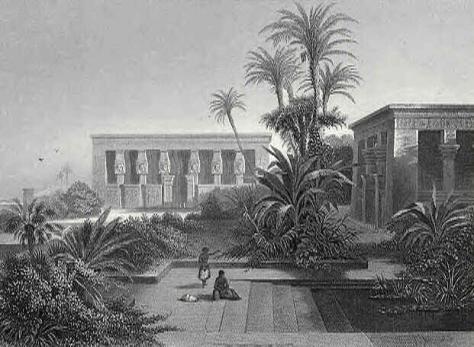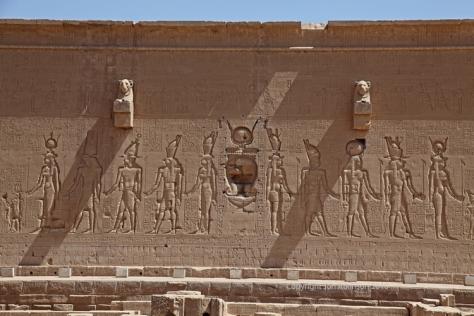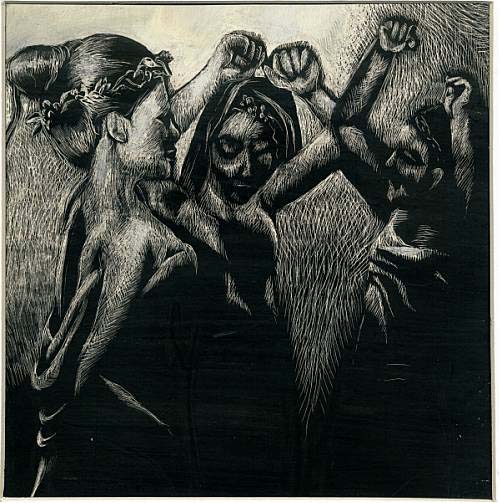
Human beings have probably probed the cupola of the heavens in search of meaning since the birth of ego consciousness. This was a time when celestial and terrestrial events succeeded one another for reasons known only to the divine autogenerator of the cosmos, when everything deemed unconscious and inert could speak its mind, when magic was the world language, and when the fundamental cohesion of all life was an acknowledged and unspoken fact. Back then everything on the earth below was thought to mimic and imitate conditions simulated in the Great Above; the stars, planets, comets and other celestial bodies were the shining genies whose words and whispers, actions and reactions, agreements and disputations might incite minor and sometimes large-scale consequences for the lives of all corporeal inhabitants. Eclipses, conjunctions, oppositions, depressions, exaltations and other celestial events worked like knee-jerk reactions, exacting benefic or malefic influence, facilitating particular conditions, or awakening transpersonal formative forces which would work through tribal personalities. This Platonic-flavoured cosmos in which everything was Aeolian, alive and functioned through a system of meaningful correspondences entrenched itself deep in the collective psyche of human beings and has never quite relinquished its hold.
Hence, it would not be erroneous to suggest that the religious function of the human psyche first found voice in archaic astrology, a philosophy which assumes that the systematic, recurring but sometimes volatile behaviours of the celestial inhabitants mediate over all corporeal phenomena and their relationship to human life. Of course the mere fact that exact situations involving the celestial bodies in the heavens are recapitulated periodically and can be calculated with mathematical precision can only mean that the qualities, influences and relevant conditions that these events are inexplicably connected with are predictable. If, then, the path of the human condition is foreseeable through this sidereal divination then the oikoumene must, in fact, have been hewn by a conscious and creative mind that transcribed general details relating the fate of all its divine, semi-divine and mortal inhabitants, as well as its own into the plastic and intangible “ether” somewhere. Here we get a taste of the spiritual and holistic origins of archaic astrology, which, when broken down anatomically, consisted of three primary aims: to descry one’s future for a chance at changing the trajectory of fate (astrology); for meteorological purposes that included the prediction of weather (meteorology); and the transcription of stellar cycles and arrangements whose movements would have been tracked to determine an appropriate time for the inception of agricultural endeavours (astronomy).
The Chaldeans or Assyrians introduced tangible markers for the qualitative and quantitative assessment of the heavens in the second millennium bce. The star-gods, genies or divinities governed a pre-established and insurmountable destiny that vacillated between auspicious and inauspicious conditions brought on by specific stellar arrangements, and all of life on earth basically swayed or reacted to the configuration of these heavenly waters. Each was ascribed rulership over a specific day or month, forcing a dissection of time. The Chaldeans proceeded to define the band of sidereal space that encompasses the wheel of heaven and interacts with the ecliptic orbit; the equinoctial markers, embraced by the zodiacal signs of Aries and Libra, could be found at the intersection of equator and ecliptic whilst their polar opposites, the tropical or solstitial markers, were to be found in in Capricorn and Cancer. The just mentioned zodiacal signs, twelve in all, were represented zoomorphically, anthropomorphically or as composite creatures using motifs derived from Babylonian mythology, and contained an exact conformation of stars known as a constellation. With respect to each individual “sign”, the stars contained in one constellation pervaded the sidereal space taken up by the imagined zodiacal image in the night skies.
Proceeding along an analogous line of reasoning, the ancient Egyptians developed a calendrical system by observing the heliacal rising and setting of individual stars. In this arrangement the year was divided into thirty-six ten-day periods known as decans, each heralded by the heliacal rising of a particular star. The star Sothis or Sirius, a celestial embodiment of the Egyptian goddess Hathor-Isis, stood sentry over the thirty-six divisions as the inaugurator of the entire year. In the third century bce, when knowledge of oriental astrology and its esoteric philosophy of astral determinism reached Egypt through a Hellenistic dispensation enabled by Alexander the Great (356-323 bce), the zodiacal and decanal systems merged and three decans were incorporated into each zodiacal sign. A few acclaimed esotericists like René Adolphe Schwaller de Lubicz (1887 – 1961) have argued against a Chaldean importation of astral determinism into Egypt, claiming that the Egyptians were holistic thinkers and believed that each part of the human body was under the mediation of a different star-god or genie that could be invoked to heal illnesses pertaining to its respective part. Despite its innovative potential and viability, the theory is disparately related to the current discussion and will not concern us for the time being.
A little before Alexander’s conquest the holistic tradition of esoteric astrology began to differentiate into subcategories. Meteorology became a distinct branch but it wasn’t until the time of Johannes Kepler (1571-1630) that the mechanistic natural protoscience known as astronomy and the animistic qualitative cosmogony of astrology parted company. The latter matured fully during the second century ce, a period when Claudius Ptolemy (90-168 ce) penned an astrological treatise entitled the Four Books, or Tetrabiblos in Greek. It was a comprehensive volume of horoscopic astrology, a subcategory of the divinatory art that seeks to comprehend meaning and answer questions using a celestial chart or horoscope which captures an exact moment in time. The work transcribed the qualities of the astrological signs, the twelve zodiacal constellations on the wheel of heaven that subsisted through the ages and remain both meaningful and functional to this very day.
In entertaining an esoteric interpretation on the zodiac one sees that the universe is united as One but at the same time coloured by archetypal forces or elemental blueprints that originate from a mother membrane and act upon the existing spectrum of variegated consciousness. Of vital importance is the acknowledgement of the twelve established signs as functioning symbols; while our ancestors almost certainly imagined shapes and signs in cupola of the star-studded night, their choice of animals and figures , real or imagined, are not as random as some might believe. As unlikely as it seems, the ascribed zoomorphic, anthropomorphic or composite creatures exhibit qualities that correspond dynamically to the inherent nature of the group of stars in their respective corner of the heavens. To give an example the stars of Cancer are symbolically depicted by the crab; the latter habitual tendency to seek and never veer far from the comfort of its home, a trait almost universal amongst all modes of being born under its section of the sky. While individual stars may belong to a collective archetype in the manner that a group of human cells belong to one organ and work in conjunction with one another to achieve a common aim, their unique positions, magnetism and gravitational force within the astral configuration permits a degree of freedom from collective law. This is why the zodiacal band of sidereal space was sometimes depicted in an active state of unfurling like a parchment of Nile papyrus.
The name given to this precession of imagined figures that comprise real cosmic phenomenon–zoe-diac, or circle of life–is wholly appropriate given that the general archetypal patterns or transpersonal influences of being that exist manifest through all complex life irrespective of time and space and are deemed to repeat for all eternity like a broken record. The fiery, restless, urgent and explosive Martian formative force that wishes to subjugate, to divide and dissect, to compartmentalize, to create, to own, to dominate and to ascend the evolutionary ladder, for instance, is indigenous to the fixed stars of Aries. This energy seeps down into consciousness, sometimes in copious amounts and sometimes in minute quantities, depending on the trajectory of the sun’s annual circuit and its conjunction with the stars of the respective constellation. In fact the nature of the latter’s influence is determined by the conjunction of the sun with the stars of the head, of the horns, of the hindquarters, of the forepaws, and so forth. The bold head of the ram is aggression; the horns raw abundance and virility; his hindquarters signpost stamina but sometimes a gross overestimation of strength; his forepaws vulnerability and restlessness. Notwithstanding its waxing and waning powers, the Arian sign is ubiquitous and indestructible, an inhabitant of the timeless zone that subjects and bends everything to its will. This indissoluble will is why all animation is fated to endure an endless cycle of everlasting repetition.
In retrospect, the clusters of stars that represent the twelve zodiacal signs of the macrocosm are like organs of the digestive, circulatory, respiratory, reproductive, endocrine, and nervous systems of the human being, the microcosm. They are all associated with different formative, vital and archetypal energies, just like the various operative and anatomical systems of the human body are all responsible for the mediation of different tasks. The passage of the solar orb through the physical space of each zodiacal cluster ensouls the archaeus or “ethereal tissue” of its corresponding disposition which in turn vibrates at the frequency of the physical world and energizes all living and evolving forms of matter. Naturally, the presence of the qualities characteristic of the vital force in the end product itself is a vindication of this hidden transmutational process and a teleological exponent of tidal interactions between the energetic macrocosm and its constituent, the receptive microcosm.
The force working through each zodiacal sign is at its apogee during a 2150-year period in which the stars of its constellation occupy the vernal point of 21-22 March, a time when the formative forces of Mother Nature have regenerated enough to infuse life back into our hallowed planet. This is made possible through slight changes that occur in our planet’s rotational axis known as axial precession, or precession of the equinoxes. Those untutored to astronomy would be unfamiliar with this phenomenon, and so it is quite necessary to engage brief explanation here. Most people know that the axis of our earth is not vertical but tilted on an angular radius of 23 degrees 27 arcminutes, an obliquity which generates seasonal rotation as the solar orb seemingly ascends and descends 23.5 degrees from the equator over the course of the year. During this time it will cross over the equator twice; these occurrences are called equinoxes. As the sun rises on the day of an equinox it sluices through an intersection formed by the celestial equator and the ecliptic. This is otherwise called the vernal point, which is not fixed but shifts by about a degree every seventy-two years due to rotational wobble of the earth’s axis. It takes a period of about 26,000 years (the Platonic Year) for the axial pole to trace out an imaginary circle around the ecliptic pole on a radius equivalent to the axis and return to the same spot. The direction is retrograde to the earth’s daily rotation. Save for changing the coordinates of stars and constellations which would otherwise seem fixed into the heavens from the perspective of an observer, the volatile movement allows the vernal point to inhabit a zodiacal constellation for a period of about 2160 years before moving onto another. Hence if the vernal point were in Cancer it would subsequently moves in an opposite direction to the sun through Gemini, Taurus, Aries, Pisces, Aquarius, and so forth.
What this phenomenon of axial precession tells us is that our concept of time is eternal but measurable and divisible as well. The primary measurers of this human construct are the twelve constellations, star clusters associated with archetypal energies that possesses, overwhelm and empower the sentient earth and all consciousness. From a metaphysical standpoint, the transpersonal force whose configuration of stars inhabit the vernal equinox achieves full expression and activation, and will dominate the filtration of vibrations leaking into the physical zone until the said annual coordinate passes into another zodiacal sign. Each transpersonal power, then, rules the vibratory composition of the physical plane for 2160 years, forfeits the position to the adjacent neighbor behind it, and recaptures this privileged and glorious cosmic position after 26,000 years. Evidence for the validity of what might be described as an astro-metaphysical phenomenon can be sought in the history of human consciousness itself.
Taurus, for instance, a sign ruled by Venus and exalted by the moon, inhabited the vernal point between 4380 and 2220 bce. The aforementioned planetary spheres embody formative forces whose spirits are wholly feminine, and looking at the state of consciousness prevenient on our planet at the time automatically vindicates the paraphysical-physical connection. Anthropological studies reveal a matriarchal situation in which human consciousness was fundamental tribal in nature, driven by collective concerns; the individual “souls” comprising the tribes themselves were imbued by receptivity and intuition; their minds, on the other hand, were impressionable, free-thinking, and all-embracing. Their sense of knowing was guided by raw instinct rather than sense-based rationality and deductive reasoning. This more tranquil mode of being facilitated an understanding of the cosmos that has long been under rug swept and forgotten; as the cause and origin of all life, Nature is the Great Mother Goddess whose variegated, diverse forms are first-hand evidence of teleology and meaning, the latter imminent when the relationship of all created forms to one another is finally contemplated. An earth-based spirituality works with created Nature, celebrating it through the medium of unconditional engagement, artistic expression, reenactment, ritual, transcendence, dance, and anything that might facilitate the impetus of creation. There can be no greater advocate of this holistic, lunar or right-brain consciousness than Minoan Crete, a Bronze-Age culture whose unprecedented artistic and engineering feats were motivated by everything feminine under the watchful gaze of the omniscient Taurian eye.
Sadly the situation was to change rather prominently with Aries, a zodiacal sign that ruled the heavens and the earth between 2220 and 60bce. Aries is ruled by Mars and exalted by the Sun, two planetary bodies which channel a fiery, seedy, and visionary masculine energy of becoming and differentiation. The energy effected a fundamental change to human consciousness, now driven by a fully-developed ego that perceives itself in relation to the Goddess-Self, or God-Self I should say. While in feminine lunar consciousness the unconscious will was driven by collective interest, ego-based consciousness shifted the soul’s axis of rotation to a much more selfish gradient now addressing individual desires, its self-serving needs and wants. This, in turn, forced a catastrophic shift in perception of what encompasses the divine, now understood as the subjugation, ensnarement and destruction of Mother Nature and its conscious extensions. The impulsive and violent acts themselves were made possible by the forgery of the Martian metal, iron, which branded new weaponry including spears, swords, and war chariots, revolutionized combat, and contributed greatly to the industrialization of the entire planet. Gone was the earth-base spirituality of respecting and venerating the bonds of life; the new, scarlet-colored ego of humanity erroneously sought transcendence through materialistic values of domination not conducive to the preservation of life. Changes to the anatomy of the human psyche spurred by the rise of Martian-solar consciousness generated a worldly domain of dissociated and disparate empires ruled by sun-worshipping priestcraft and plagued by continual warfare. In many ways the milieu of the Arian Age resembled a scene from Dante’s Purgatory: the ancient Egyptians confronted the war-loving Hittites for territorial expansion into the Near East; the Mycenaeans burned and looted Cnossos and the Minoan temple-palaces; Homer’s mythical era unfolded as a nine-year battle between the fated Trojans and the rage-driven Greek heroes; the Assyrians fought the Babylonians with their dreaded horse-driven chariots of war; the ancient world fell into the ambitious arms of Alexander the Great, the single greatest warrior in history and the Romans warred against the barbaric Illyrian-Italic tribes to expand their empire. These historic events unraveled beneath an omniscient horde of blood-thirsty sun gods like Apollo, Helios, Mithras, and Amun-Re.
In juxtaposing the two zodiacal Ages, the metaphysical reality behind the mechanistic veil of celestial appearances becomes much more tangible. The same analysis can be exacted for the Christ consciousness of the Piscean Age and the forthcoming Aquarian Age. Looking at the cosmos from this esoteric trajectory goes far in spiritualizing the automaton of contemporary science, surrendering to the sentient soul of Mother Nature the dignified worship to which she is wholly entitled, and transforming the ancient concept of individual and communal fate into a prospective and endearing philosophy. Perhaps everything is predetermined to a degree, encrypted in the twinkling hieroglyphs of the fated skies…









